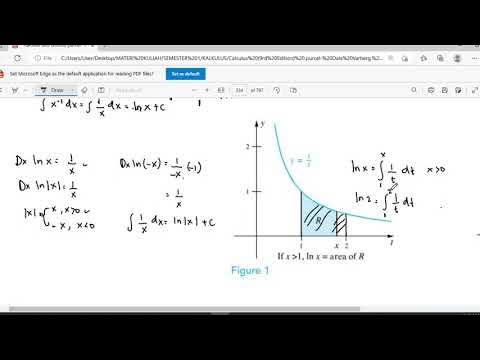Operations with polynomials — Basic example | Math | SAT | Khan Academy
Summary
TLDRIn the transcript, the instructor simplifies a complex mathematical expression involving powers of y. Starting with 1/88 or one over 88, the expression is expanded to include y to the 100th power plus one, then subtracting 1/44 y to the 100th minus 1/2. By distributing the negative sign and combining like terms, the instructor simplifies the expression to negative one-eighth y to the 100th plus three halves, demonstrating a clear step-by-step process to reach the simplified form.
Takeaways
- 🔢 The original expression is equivalent to \( \frac{1}{88} \) or \( \frac{1}{88}y^{100} + 1 \).
- 📝 The expression is rewritten to subtract \( \frac{1}{44}y^{100} - \frac{1}{2} \) from \( \frac{1}{88}y \).
- 🔍 Negative signs are distributed to simplify the expression.
- ➖ The terms \( \frac{1}{88}y^{100} \) and \( -\frac{1}{44}y^{100} \) are combined.
- ➕ The expression \( -\frac{1}{2} \) is converted to \( +\frac{1}{2} \) after distribution.
- 🧩 The combined terms are simplified to \( \frac{1}{88}y^{100} - \frac{1}{44}y^{100} \) and \( +\frac{3}{2} \).
- 📉 The common denominator of \( \frac{1}{88} \) and \( \frac{1}{44} \) is found to be 88.
- 🔄 The fraction \( \frac{1}{44} \) is converted to \( \frac{2}{88} \) to match the common denominator.
- 📌 The simplified expression becomes \( -\frac{1}{88}y^{100} + \frac{3}{2} \).
- 🔚 The final simplified form of the expression is \( -\frac{1}{88}y^{100} + \frac{3}{2} \).
Q & A
What is the original expression the instructor is trying to simplify?
-The original expression is 1/88 y to the 100th power plus 1, minus (1/44 y to the 100th minus 1/2).
What is the first step the instructor takes to simplify the expression?
-The first step is to rewrite the expression and distribute the negative sign across the terms within the parentheses.
How does the instructor represent the negative distribution of the terms?
-The instructor represents it as -1 times each term inside the parentheses, which results in -1/44 y to the 100th and +1/2.
What is the next step after distributing the negative sign?
-The next step is to combine like terms, specifically the terms involving y to the 100th power.
What is the common denominator used to combine the terms involving y to the 100th power?
-The common denominator used is 88, which is the least common multiple of 44 and 88.
How does the instructor simplify 1/88 minus 1/44?
-The instructor simplifies it by recognizing that 2/88 is equivalent to 1/44, and thus 1/88 minus 2/88 equals -1/88.
What is the final simplified form of the original expression according to the instructor?
-The final simplified form is -1/88 y to the 100th plus 3/2.
What mathematical property does the instructor use to combine the fractions 1/88 and 1/44?
-The instructor uses the property of finding a common denominator to combine the fractions.
How does the instructor handle the term 'plus 1/2' after distributing the negative sign?
-The instructor correctly keeps the 'plus 1/2' term as it is, as it is not affected by the negative distribution.
What is the significance of the term 'plus 3/2' in the final simplified expression?
-The term 'plus 3/2' is the result of adding 1 and 1/2, which simplifies to 3/2, and it is a constant term in the expression.
Can the expression be further simplified after the instructor's final step?
-No, the expression has been simplified to its most basic form, with the variable term and the constant term separated.
Outlines

Cette section est réservée aux utilisateurs payants. Améliorez votre compte pour accéder à cette section.
Améliorer maintenantMindmap

Cette section est réservée aux utilisateurs payants. Améliorez votre compte pour accéder à cette section.
Améliorer maintenantKeywords

Cette section est réservée aux utilisateurs payants. Améliorez votre compte pour accéder à cette section.
Améliorer maintenantHighlights

Cette section est réservée aux utilisateurs payants. Améliorez votre compte pour accéder à cette section.
Améliorer maintenantTranscripts

Cette section est réservée aux utilisateurs payants. Améliorez votre compte pour accéder à cette section.
Améliorer maintenantVoir Plus de Vidéos Connexes

Movimiento Rectilíneo Uniforme (MRU) - Ejercicios Resueltos - Intro

Fungsi Transenden 1 (Logaritma Natural/Ln)

Perpangkatan dan Bentuk Akar [Part 2] - Perkalian pada Perpangkatan

MATHEMATICS PRACTICE QUESTIONS FOR THE 2025 TARUNA KEMALA BHAYANGKARA HIGH SCHOOL EXAM - PART 2

Jika lim x->-3 (x^2+4x+3)/(x+3)=a-1,nilai a adalah...

FISIKA MATEMATIKA-2 | FUNGSI KHUSUS PART-3
5.0 / 5 (0 votes)
